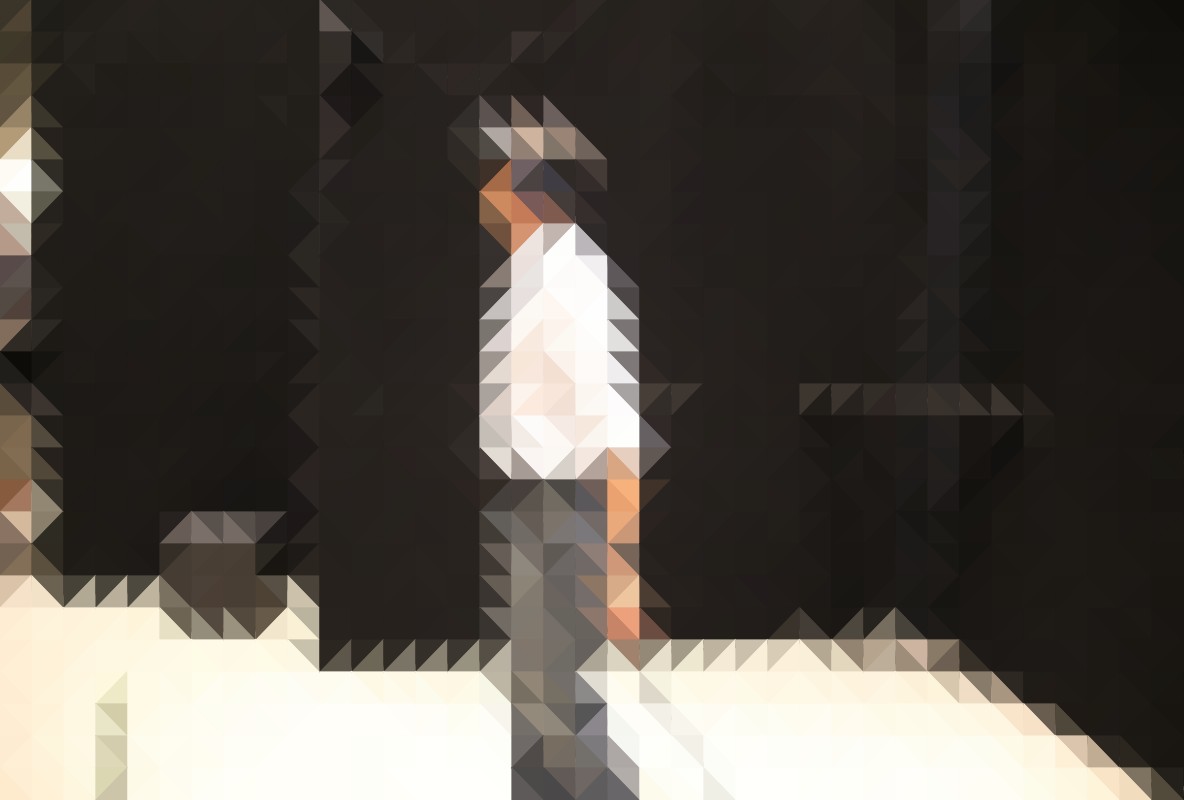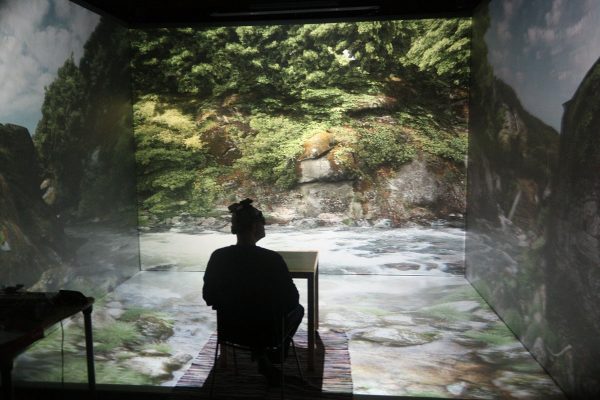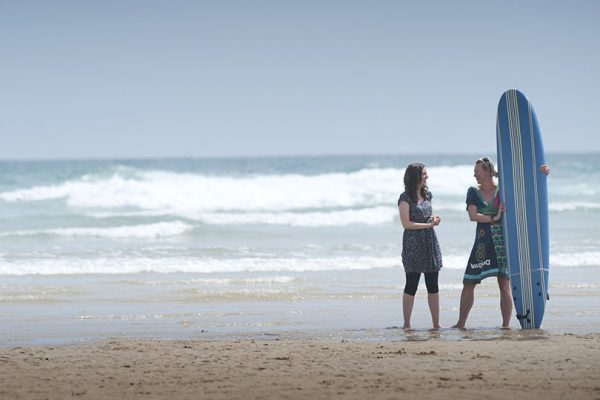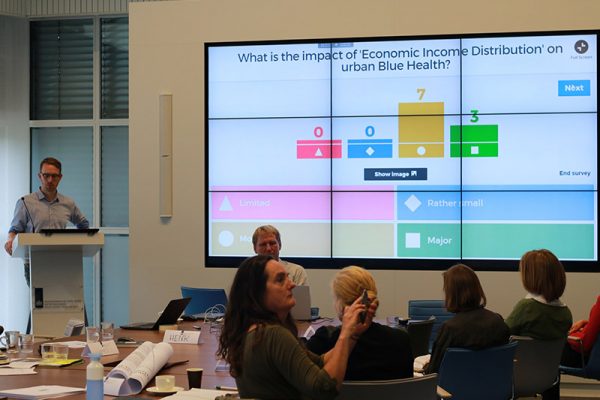Virtual ‘blue’ for healthcare
Consider ‘virtual reality’ for a moment and your mind might conjure up visions of flight simulators, futuristic theme park attractions, or The Matrix.
But with this technology becoming increasingly mainstream, to the extent that a typical smartphone can now be transformed into a virtual reality headset, its applications are becoming ever more numerous.
In BlueHealth, we will be using state-of-the-art virtual reality technology to recreate ‘blue’ environments like lakes, coastlines and even underwater scenes.
These virtual environments will then be used as a therapeutic tool to improve the health and well-being of groups of people who might otherwise find it difficult to access such environments.
This work is being led by the Department for Design Sciences at Lund University in Sweden. A number of researchers working on the BlueHealth project met in Sweden last month to try out the new technology for themselves, and I was lucky enough to be among them.
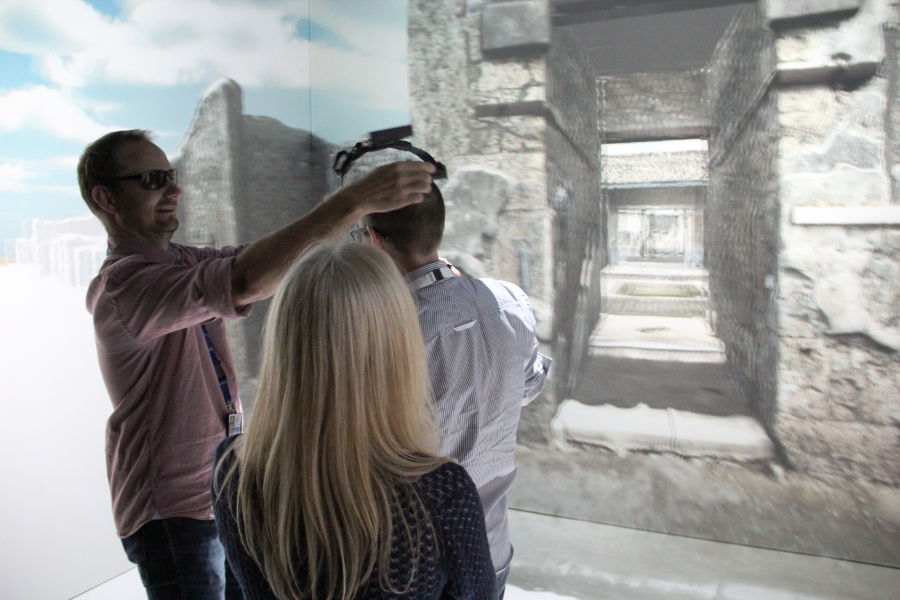
We were first taken into a virtual reality ‘cave’ where 3D images were projected onto three walls and the floor. Wearing 3D glasses, we were transported around a vast virtual forest brimming with trees, streams and wildlife.
BlueHealth colleagues at Lund have found that recovery from stress is improved after viewing this immersive environment compared to a blank wall, especially when sounds of birds and water are added. Clearly, there are potential applications in numerous healthcare settings and other contexts where such effects could be used to improve outcomes in patients and others who have undergone stressful experiences.
We were then invited to try out a new wearable headset with headphones and a wireless controller, which allows a truly immersive 360° virtual experience. A series of cameras in the room track your movement meaning that as you move around, different parts of a 360° environment are presented through the headset.
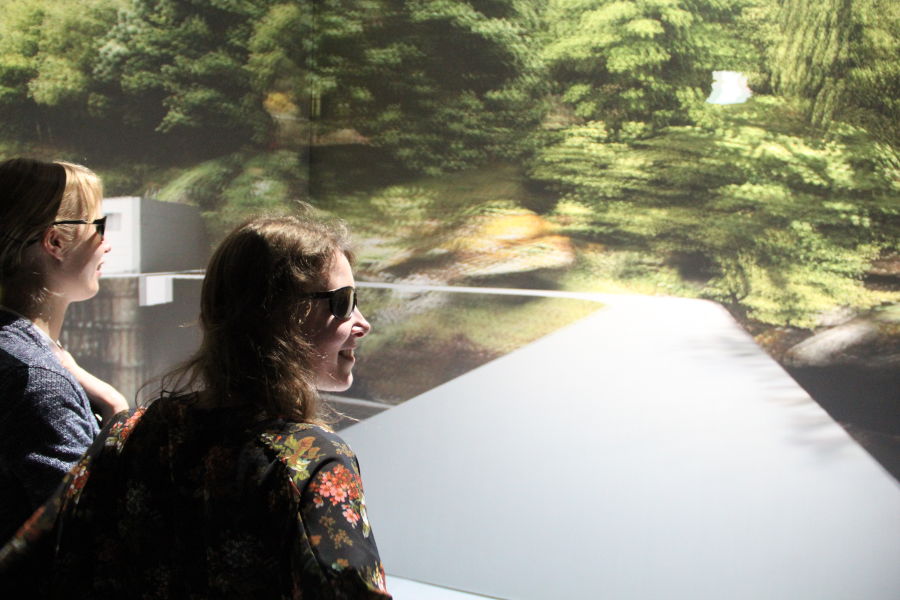
Using this equipment, we were able to experience an underwater shipwreck where we could explore the deck of a boat and interact with marine wildlife, including a colossal virtual blue whale which swam over our heads.
Previously, such an experience could only be had by experienced divers; virtual reality technology brings such awe-inspiring experiences to anyone with access to the technology. But how are we using this in BlueHealth to improve people’s health and well-being?
Clearly there are many groups of people who are less able to access these kinds of natural environments who may benefit from virtual experiences of nature. Previous research has already demonstrated that people with dental anxiety remembered less vivid experiences when they were able to view a virtual coastal environment during their dental treatment, and BlueHealth colleagues have been approached by palliative care units who are interested in using the technology to improve end-of-life care.
To begin with though, the technology will be used in elderly populations with reduced mobility in Sweden, Estonia and the UK who are less able to access ‘blue’ natural environments. Through a series of experiments, we will investigate whether these virtual experiences can confer similar health and well-being benefits to actually being outdoors. If our results show that they can, then the scope for using this technology in a range of healthcare applications is huge.

